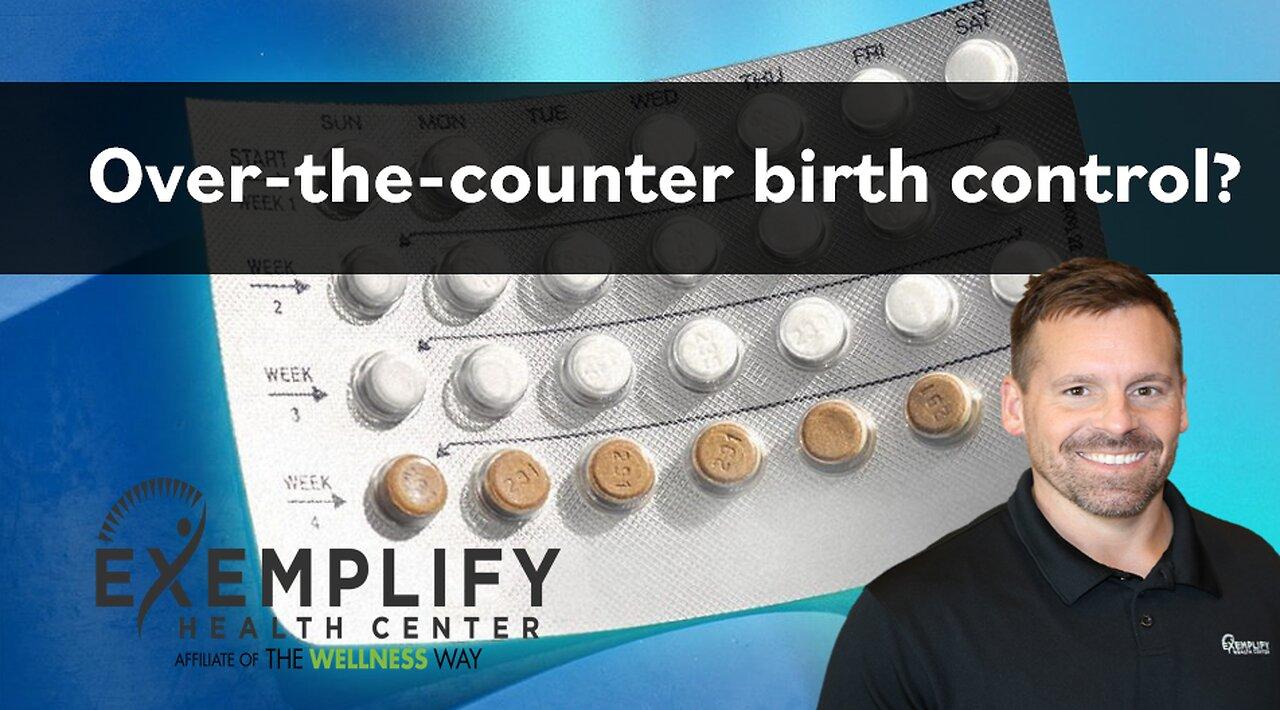Over-the-Counter Birth Control: Examining Its Role In The Post-Roe Landscape

Table of Contents
Increased Accessibility and Affordability
The current system of prescription-only birth control creates significant barriers to access for many individuals. Over-the-counter birth control aims to dismantle these obstacles, leading to a more equitable and accessible healthcare system.
Breaking Down Barriers to Access
Making birth control available over-the-counter removes numerous hurdles that prevent people from accessing necessary reproductive healthcare.
- Reduced cost: Prescription birth control can be prohibitively expensive, even with insurance. Over-the-counter options have the potential to be significantly cheaper, making them accessible to a wider population.
- Convenience of purchase at pharmacies: Eliminating the need for doctor's appointments simplifies the process, particularly for individuals in rural areas or those with limited transportation options. This increased convenience is crucial for timely access to contraception.
- Elimination of insurance co-pays: Many insurance plans have high co-pays for prescription birth control, creating a financial burden for many. Over-the-counter options bypass this issue.
- Accessibility in underserved areas: Many underserved communities lack sufficient access to healthcare providers who can prescribe birth control. Over-the-counter availability would address this disparity.
Studies have shown that the cost of prescription birth control varies significantly depending on the type of medication and insurance coverage. For example, a monthly supply of certain pills can cost upwards of $50 without insurance, a significant barrier for many individuals and families. In contrast, over-the-counter options could dramatically reduce this cost, potentially making them significantly more affordable. Geographic disparities in access also impact women disproportionately, particularly those living in rural areas or in medically underserved communities.
Expanding Choice and Empowering Individuals
Increased availability of over-the-counter birth control expands options and empowers individuals to take control of their reproductive health.
- More diverse range of contraceptive options available without prescription: This includes options like condoms, emergency contraception (Plan B), and potentially other forms of contraception in the future.
- Improved education and access to information: Wider availability necessitates increased public health campaigns to ensure responsible use.
- Increased patient autonomy: Individuals can make informed choices about their reproductive health without needing to navigate the healthcare system.
Currently, the range of over-the-counter contraceptive methods is limited, primarily focusing on condoms and emergency contraception. However, the potential for expanding this range in the future holds promise for improved access and patient choice. Clear, accessible information on the effectiveness and proper use of each method is crucial.
Potential Challenges and Concerns
While the benefits of over-the-counter birth control are considerable, several challenges and concerns need addressing.
Misinformation and Improper Use
Increased accessibility also increases the risk of misuse if not coupled with adequate education and awareness campaigns.
- Need for clear and accessible information on proper usage: Comprehensive public health campaigns are essential to ensure correct usage and maximize effectiveness.
- Potential for increased rates of unintended pregnancy due to misuse: Misinformation can lead to ineffective use, potentially negating the benefits of increased access.
- The role of public health campaigns in mitigating these risks: Robust educational initiatives are crucial to promote safe and effective contraceptive use.
Data consistently shows a correlation between proper contraceptive use and reduced unintended pregnancy rates. Comprehensive public health campaigns are essential in ensuring the public has the correct knowledge and resources.
Regulatory Hurdles and Political Opposition
Significant obstacles remain to making over-the-counter birth control a reality.
- FDA approval process: The rigorous FDA approval process for over-the-counter drugs can be lengthy and complex.
- Lobbying efforts by anti-abortion groups: Political opposition to expanding access to contraception presents a significant challenge.
- Potential state-level restrictions on access to contraception: Some states may impose restrictions, hindering the nationwide implementation of over-the-counter birth control.
The FDA approval process is stringent and requires extensive safety and efficacy data. Navigating this process requires significant time and resources. The political landscape surrounding reproductive healthcare also presents a major hurdle, with significant opposition from certain groups.
The Future of Over-the-Counter Birth Control and Reproductive Rights
The long-term implications of wider access to over-the-counter birth control are far-reaching.
Impact on Public Health
Increased access to birth control has the potential to significantly improve public health outcomes.
- Decreased rates of unintended pregnancies: Easier access translates to fewer unplanned pregnancies.
- Reduced need for abortions: Preventing unintended pregnancies can decrease the demand for abortion services.
- Improved maternal and child health outcomes: Access to contraception leads to healthier pregnancies and better outcomes for both mothers and children.
Numerous studies have modeled the potential impact of increased contraceptive access on unintended pregnancy rates and abortion rates, showing a positive correlation between access and reduced rates of both.
The Path Forward
Several strategies can facilitate the safe and effective implementation of over-the-counter birth control.
- Investing in public health education campaigns: Providing comprehensive information on proper usage is essential.
- Simplifying the regulatory approval process: Streamlining the FDA approval process can expedite the availability of over-the-counter options.
- Addressing political barriers: Advocating for policies that support access to contraception is crucial.
Collaboration between policymakers, healthcare providers, and community organizations is vital to achieving this goal.
Conclusion
The availability of over-the-counter birth control presents a significant opportunity to expand access to reproductive healthcare, particularly in the post-Roe landscape. While challenges related to misinformation and regulatory hurdles exist, the potential benefits—increased affordability, convenience, and patient autonomy—are substantial. By addressing concerns about misuse and navigating political obstacles, we can work toward a future where everyone has access to the birth control they need, promoting reproductive health and freedom of choice. To learn more about how you can support increased access to affordable and convenient over-the-counter birth control, contact your local reproductive rights organization. Let's champion the cause of accessible and affordable over-the-counter birth control options.

Featured Posts
-
 Missed Foul Call Costs Pistons Nba Referees Admit Error In Knicks Game
May 17, 2025
Missed Foul Call Costs Pistons Nba Referees Admit Error In Knicks Game
May 17, 2025 -
 Fortnites Latest Shop Update What Went Wrong
May 17, 2025
Fortnites Latest Shop Update What Went Wrong
May 17, 2025 -
 Previsiones Deportivas Semanales Analisis Y Pronosticos De Prensa Latina
May 17, 2025
Previsiones Deportivas Semanales Analisis Y Pronosticos De Prensa Latina
May 17, 2025 -
 Elaekeyhtioeiden Osakesijoitusten Heikko Alkuvuosi
May 17, 2025
Elaekeyhtioeiden Osakesijoitusten Heikko Alkuvuosi
May 17, 2025 -
 Josh Harts Wife Reacts To Jaylen Browns Game 5 Performance
May 17, 2025
Josh Harts Wife Reacts To Jaylen Browns Game 5 Performance
May 17, 2025
Latest Posts
-
 Donald Trumps Scandals How Multiple Affairs And Sexual Misconduct Accusations Failed To Prevent His Presidency
May 17, 2025
Donald Trumps Scandals How Multiple Affairs And Sexual Misconduct Accusations Failed To Prevent His Presidency
May 17, 2025 -
 Upad Prosvjednika U Teslin Showroom U Berlinu Detalji I Posljedice
May 17, 2025
Upad Prosvjednika U Teslin Showroom U Berlinu Detalji I Posljedice
May 17, 2025 -
 Prosvjednici U Berlinu Upad U Teslin Izlozbeni Prostor Prijetnja Planetu
May 17, 2025
Prosvjednici U Berlinu Upad U Teslin Izlozbeni Prostor Prijetnja Planetu
May 17, 2025 -
 Understanding The Dynamics Of The Trump Marriage
May 17, 2025
Understanding The Dynamics Of The Trump Marriage
May 17, 2025 -
 Donald And Melania Trump Separated Or Still Together
May 17, 2025
Donald And Melania Trump Separated Or Still Together
May 17, 2025
